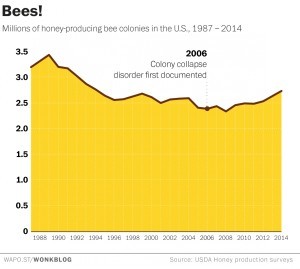Jay L. Wile's Blog, page 41
March 7, 2016
The Inquisition Strikes Again

Karl Aspelin’s painting of Martin Luther burning the papal bull that excommunicated him from the Roman Catholic Church.
There are times when modern scientists act like members of the Inquisition. Such situations can result in people getting removed from their positions in the scientific community, courses being shut down, scientists being fired, or papers being retracted. (see here, here, here, here, and here). Unfortunately, it has happened again, resulting in another scientific paper being retracted.
The paper, Biomechanical Characteristics of Hand Coordination in Grasping Activities of Daily Living, discussed the results of an experiment that tried to figure out the functional link between the architecture of the hand and its coordination. In the experiment, 30 individuals (15 men and 15 women) with apparently healthy hands were given a glove to wear while performing several mundane tasks. The glove measured the angles of the joints in the hand throughout the time each task was being performed. This allowed the researchers to then determine the degree to which the movements of the hand joints were coordinated.
The researchers found that while some joints (particularly those of the thumb) did move independently of the others, there was an enormous amount of coordination between the joints. The authors note:
This suggests that there is no need for the human hand to control each joint independently. If there was not such biomechanical architecture, such as the separated connection of each articular from a single muscle, it would significantly increase the computational burden of the [central nervous system] to make up for the loss of the biomechanical architecture.
In other words, the joints of the hand are coordinated so that the brain doesn’t have to concentrate on controlling each joint independently when the hand is grasping objects.
Why was this scientific paper retracted? Was there a serious methodological error in the experiment? Was the data analysis incorrect? Did the authors commit some sort of fraud? No. It was retracted because the authors dared to do something that scientists have done throughout the vast majority of human history: They dared to mention the Creator in their scientific work!
The authors commit this terrible act a total of three times. Here are the sentences that contain the scandalous reference:
In conclusion, our study can improve the understanding of the human hand and confirm that the mechanical architecture is the proper design by the Creator for dexterous performance of numerous functions following the evolutionary remodeling of the ancestral hand for millions of years.
Hand coordination should indicate the mystery of the Creator’s invention.
In conclusion, our study can improve the understanding of the human hand and confirm that the mechanical architecture is the proper design by the Creator for dexterous performance of numerous functions following the evolutionary remodeling of the ancestral hand for millions of years.
Horrifying, isn’t it? Well, some people thought so. Indeed, that is the title of one of the comments attached to the article! In fact, the journal (PLoS One) received so many complaints about this horrifying situation that they retracted the entire paper!
Interestingly enough, one of the authors posted in the comments section of the article, indicating that the entire brouhaha is the result of a cultural misunderstanding. The author states that no one from the team is a native English speaker, and they thought the term “Creator” referred to nature. So, in fact, they were saying that the design seen in the human hand was the result of the work of nature, i.e., evolution.
Given the fact that the authors used perfect English to describe their experiment and results, does it make sense that they didn’t really understand what the word “Creator” meant? From my personal experience, I would say that it does. My Ph.D. advisor was German, as were some of the scientists with whom I worked as a graduate student. Since I took German in high school and university, I tried to talk with them in German whenever I could. We could discuss details of nuclear chemistry and physics without any problems, but when I would try to say something as simple as “Have a good time,” they would chuckle, because what I thought was perfectly good German for that phrase (Haben Sie eine gut zeit – a direct translation from the English) meant absolutely nothing to them! Thus, it is very possible that this was simply a translation error on the part of the authors.
So once the horrifying sentences were pointed out, why didn’t the editors simply make a few changes, getting rid of the words “design” and “Creator” or replacing “Creator” with with “evolution?” Because of their fear of the Inquisition. When the High Priests of Science suspect you of heresy in word, heresy in thought, or heresy in deed, you have to scramble to show them that you aren’t a heretic. Otherwise, you will be excommunicated from the fold. While retraction shouldn’t have happened (there is nothing wrong with the data or the analysis as far as I can see), it had to happen, for the sake of the journal’s reputation.
It is terribly sad that modern science has sunk to such a level.
February 29, 2016
Review of Evolution: Still A Theory in Crisis
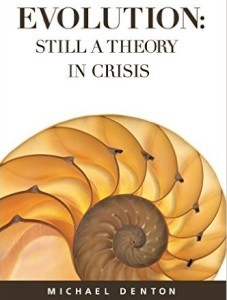
Dr. Michael Denton’s latest book
Back in January, I read that Dr. Michael Denton was about to release a new book on evolution. I ordered it right away and started reading it as soon as I could, because I thought that his previous book, Evolution: A Theory in Crisis, was amazing. For a long time, I considered it the best discussion of evolution that was available to the general public. However, like all books on scientific issues, much of the information became outdated over the years, so I was really excited that he was releasing a new book on the same subject.Dr. Denton earned an M.D. from Bristol University and a Ph.D. in biochemistry from King’s College London. After earning his Ph.D., he was appointed to the faculty at La Trobe University in Australia. He then did pathology work in England, Canada, and Australia. Eventually, he ended up on the faculty at the University of Otago in New Zealand. Currently, he is a Senior Fellow at the Discovery Institute’s Center for Science and Culture, which tells you he is a member of the “intelligent design” community. His dual training in medicine and biochemistry, as well as his experience working in several different countries, gives him an interesting perspective on science in general and evolution in particular.
Like his previous book, this one is encyclopedic. It covers a wide range of topics, but unlike his previous book, it is focused on the difference between structuralism and functionalism. The way he constructs the two positions, all Darwinists fall into the functionalism camp. They believe that structures develop in nature because they are functional. After all, natural selection is constantly weeding out poor adaptations and preserving useful ones. As a result, whether or not it is functional determines whether or not it exists in the biological world. Denton, however, argues for structuralism, a view that was quite in vogue in the 18th and 19th centuries. In this view, there are certain structures that are inherent in the world, and life makes use of those predefined structures. As Denton writes:
It is hard to imagine two scientific frameworks as diametrically opposed as structuralism and functionalism. Where functionalism suggests that function is prior and determines structure, structuralism suggests that structure is prior and constrains function. (Kindle e-reader, Chapter 1: Introduction)
Actually, I can think of scientific frameworks that are more diametrically opposed (Newtonian physics versus quantum mechanics, for example), but his overall point is valid. Those who believe in structuralism look at biology quite differently from those who believe in functionalism.
As a structuralist, then, how does Denton view biology? He says that there are structures that define specific groups of living organisms, and those structures provide a clear separation between the groups. Furthermore, there are no functional intermediates that connect these structures. One of the many examples he brings up is the enucleate red blood cell. In all mammals, the red blood cell (which carries oxygen in the blood stream) has no nucleus, because it is ejected while the cell is developing.
As Denton points out, since enucleate red blood cells exist in all mammals, but they do not exist in the animals from which those mammals supposedly evolved, enucleate red blood cells must have been an innovation that occurred in the common ancestor of all mammals. However, he wonders what could possibly be an intermediate. A cell that has half a nucleus? A cell in which the nucleus has been partly ejected or compartmentalized in some way? How could a series of small, stepwise mutations lead to such a dramatic change for a cell, especially given the complex machinery that the cell uses to eject its nucleus? In addition, how could those intermediates be functional in any way?
Denton does this with many, many different structures that define various groups of organisms. In some cases (such as the enucleate red blood cell), he does a convincing job of showing how the structure could not have formed by any Darwinian process. In other cases (such as the five-digit limb in vertebrates), he doesn’t do nearly as good a job. Often, his argument devolves into “I can’t imagine a way that this could be important for function in all these different species.” In those moments, he is significantly less convincing.
Overall, however, I do think he makes a case for structuralism. Unfortunately, he doesn’t seem to see what structuralism really implies. Despite the fact that he makes it clear that there are gaps between many groups in the living world, and despite the fact that he says there is no way to bridge these gaps through any Darwinian process, he still believes in common descent, the idea that all species come from a common ancestor or a small group of common ancestors. In fact, he claims:
But common descent, or “descent with modification,” has never been in doubt since Alfred R. Wallace’s famous “Sarawak Law Paper” (written in Borneo in February 1855)… (Kindle e-reader, Chapter 5: Evo-Devo)
Now, of course, nothing could be further from the truth. Common descent is very, very much in doubt, and the more we learn about genetics, the more in doubt it becomes. Orphan genes, for example, provide strong evidence against common descent. Denton even discusses them in the context of structuralism, but he doesn’t see how they argue against common descent.
So how can he argue that there are unbridgeable gaps between groups of organisms but all organisms are related to one another through common descent? As he says:
In short, nature is still very much an empirical discontinuum of invariant unique forms, and there is no direct evidence that the “gaps” were ever closed by the functional continuums demanded by Darwinian theory…This is not to claim that the Types were not actualized by natural processes. I believe they were and that the entire pattern of evolution was prefigured into the order of things from the beginning. (Kindle e-reader, Chapter 3: The Hierarchy of Nature)
In other words, Denton believes that these structures are the natural result of the way the world works. They did not evolve gradually, but popped into existence over time because of the order inherent in nature. Of course, he doesn’t use the term “popped.” He says that such structures were the result of “saltation” events that occurred throughout the earth’s natural history, and they occurred specifically because the universe was designed so they would evolve.
While Denton thinks the universe was designed that way (presumably by God), I would think that some atheists would also be comfortable with this view of biology. In Mind and Cosmos, for example, atheist Thomas Nagel recognizes that Darwinian evolution simply cannot explain the natural world, so he posits some “teleological” force that drove biological development. Presumably, that teleological force could also cause Denton’s saltation events.
While I agree with Denton’s structuralism, I strongly disagree with his idea that these structures are the result of saltation events that have occurred throughout the earth’s history. Instead, I think the conclusion one must reach from structuralism is rather clear: there are defined gaps between groups of organisms because God designed them that way. The minor variations that occur within these groups are the result of microevolutionary changes that have taken place since they were created.
Even though I think Denton comes to the wrong conclusion in his book, there is a lot of value in it. In addition to providing strong evidence for structuralism, he also discusses other things that are related to origins. For example, he gives a long list of problems associated with the absurd idea of abiogenesis. He also quotes several evolutionists who make the strong case that macroevolution is not just an accumulation of microevolutionary changes. That section alone is worth the price of the book.
If you read only a few books on the origins issue, however, this probably isn’t the best one for you. There are other books (such as Shadow of Oz) that address the issue in a better, more complete way. This is disappointing to me, since I was really hoping that Denton’s new book would be as powerful as his old book. Unfortunately, it is not.
February 23, 2016
Honeybees Are Recovering in the U.S.
This graph shows the number of honeybee colonies in the U.S. each year. (click for source)
Have you seen the headlines? “Beekeepers Feel the Sting of Climate Change,” “Climate change crushes bee populations,” and “Bees Are Losing Their Habitat Because of Climate Change.” Yes, the world is running out of bees and “climate change” aka “global warming” is to blame. Of course, the science behind the entire concept of human-induced, catastrophic climate change is shaky at best, so it is hard to understand how anyone can take such headlines seriously. Nevertheless, there are those who think that bees are on their way to extinction, and human-induced climate change is to blame. Of course, like most of the statements made by global warming alarmists, the facts tell us something completely different.An excellent article published in the journal Science, for example, tells us that the main reason honeybee colonies have struggled recently is because of the spread of a virus called the deformed wing virus. It is carried by a mite called Varroa destructor, which has been infesting Asian honeybee colonies since at least the 1960s. When European honeybees were introduced to Asia, the mite was able to jump to the European species, and as a result, it began spreading around the world.1
Why should we care about bees dying off? Because they are very important pollinators. In order for a flowering plant to produce fruit, pollen from one flower must travel to another flower and fertilize the egg cells found there. While wind can carry pollen, insects are much more efficient at the job. Bees are especially important when it comes to pollination. They are the main pollinators of 130 crop species in the United States and 400 crop species worldwide.2 Bees are so important that a French periodical for beekeepers reported:3
Professor Einstein, the learned scientist, once calculated that if all bees disappeared off the earth, four years later all humans would also have disappeared.
In fact, Einstein made no such calculation, and although a version of that quote is attributed to Einstein, there is no evidence he actually said or wrote anything of the kind. Nevertheless, bees are very important to humanity.
So, of course, if the number of bee colonies was decreasing, there would be great cause for alarm. Fortunately, it is not. Because they are so important to agriculture, the USDA tracks the number of bee colonies in the United States each year. The graph shown at the top of this post illustrates what the USDA has found. While the number of bee colonies in the U.S. decreased steadily from 1989 to 2008, they have recovered since. Their 2014 numbers are roughly equivalent to their 1994 numbers. So while bee colonies haven’t completely recovered from their decline, they are certainly doing better than they have done in the past decade or so.
Like most of the nonsense that global warming alarmists try to promote, the idea that honeybee populations are on the verge of collapsing simply cannot be supported by the scientific data.
REFERENCES
February 15, 2016
Gravitational Waves Detected!

This is an artist’s conception of two merging black holes and the gravity waves they generate.
Einstein’s General Theory of Relativity makes some outlandish claims. For example, it says that the rate at which time passes depends on the strength of the gravitational field to which you are being exposed. It also says that gravity isn’t really a force. Instead, it is a consequence of how massive bodies warp spacetime, a four-dimensional mesh in which the three dimensions of space are merged with time. When I first read about this wild theory, the scientist in me was very skeptical. However, its predictions have been verified time and time again, so the scientist in me is forced to accept it as a reasonable description of the natural world.
For example, the global positioning system (GPS) must take relativity into account in order to work properly. Because they are farther from the center of the earth, the satellites that make up the GPS experience a lower force of gravity than we do on the surface of the earth. As a result, time passes more quickly for them than it does for us. If this were not taken into account, the GPS couldn’t accurately determine your absolute position on the surface of the earth.1 (There are many other factors that must be taken into account, including the effect of relative motion on time, but that is a part of Einstein’s Special Theory of Relativity and is not related to this post.)
Of course, there are many other confirmations of Einstein’s General Theory of Relativity. Mercury’s closest approach to the sun is best explained by general relativity. General relativity gives the only correct description of how a massive object bends the path of light. An experiment first done in 1959 showed that gravity causes a shift in the wavelength of light, which was predicted by general relativity. More recently, satellites confirmed a process called frame dragging, which is also a prediction of general relativity.
Just a few days ago, Physical Review Letters published a paper that provides yet another confirmation of general relativity, but this one is more important than many of the others.
In Einstein’s view of the universe, we are embedded in a four-dimensional mesh called spacetime. Anything with mass warps this mesh, and that produces the effect we call gravity. Two massive objects accelerate towards one another not because there is a force acting between them, but because the way they warp spacetime requires that they accelerate towards one another. Well, because massive objects warp spacetime, their motion should send ripples (gravitational waves) through that mesh.
Unfortunately, these waves are predicted to be very small, so they are incredibly hard to detect. Nevertheless, physicists at the Laser Interferometer Gravitational-Wave Observatory (LIGO) set out to find them. They built two L-shaped detectors, each of which is 4 kilometers long. Laser light is bounced back and forth in the detectors. If everything is stable, the laser light overlaps. If something “wiggles” the detector (including a gravitational wave) the laser light won’t overlap perfectly, and a signal is generated.
Of course, there are a lot of things that can wiggle the detectors, such as earthquakes, the movement of heavy traffic outside, and even the crash of waves on the shoreline. Lots of things are done to reduce the importance of such effects, but one of the most crucial is that the two detectors are placed about 3,000 kilometers apart from one another. If they both see the same signal, the time between those two signals can tell the physicists the speed at which whatever caused the signal is moving. To me, that’s the most important part of this experiment.
On September 14, 2015 at 09:50:45 UTC, both detectors recorded the same signal. This isn’t unusual. Even when things are working perfectly, the detectors get signals from all sorts of unexpected “wiggles.” In addition, the system is set up to generate false signals from time-to-time in order to see if the scientists analyzing the experiment are being careful enough to weed out false positives.
In this case, the signal wasn’t a false positive, and the two detectors saw the same signal about 0.007 seconds apart from one another.2 There is some error associated with the time measurement, but it is consistent with something that is traveling at the speed of light. Waves from earthquakes, traffic, and surf cannot travel at the speed of light. However, gravity waves are supposed to. It is hard to imagine any other explanation for essentially identical signals produced by something traveling at the speed of light.
Based on the characteristics of the signals, the scientists estimate that the gravity waves were produced by two black holes that are 29 and 36 times as massive as our sun spiraling towards one another and merging, as depicted in the drawing above. That’s two really massive objects experiencing a violent “collision,” but they produced such a weak signal that it took two 4-kilometer-long detectors to observe it. That should tell you something about how difficult it is to detect gravity waves!
As an experimental feat alone, then, this result is incredible. However, it is also a very important confirmation of general relativity. First, I don’t know of a nonrelativistic theory of gravity that predicts gravitational waves. More importantly, however, this directly confirms Einstein’s view of the universe. Based on this measurement, we really do live embedded in a mesh of spacetime, and massive objects really do warp it. Gravitational waves set Einstein’s theory of gravity apart from any other gravitational theory of which I am aware, and that makes this measurement incredibly important.
Now, of course, this is just one measurement. It is always possible that it is the result of some strange error that no one has considered. However, if this result is real, there should be more violent collisions of massive objects in the universe, so LIGO should see more signals as time goes on. If so, this will probably be known as one of the most important confirmations of Einstein’s General Theory of Relativity.
REFERENCES
February 12, 2016
A Limited-Time Special Offer From Great Homeschool Conventions
Homeschool Event of the Year!
2016 – Great Homeschool Conventions
**See special offer at the end of this article – Thanks to Dr. Wile.
Great Homeschool Conventions is excited to partner with National Center for Life and Liberty, with a special thanks to our Title Sponsor, WORLD News Group, to host four regional homeschool conventions once again in 2016!
Why would you want to attend a Great Homeschool Conventions’ event? Each year, we begin to build the coming year’s event with that question in mind. We love our homeschooling families and want to bring the very best to you. We strive to provide top notch homeschool conventions which encourage, inspire, and educate homeschooling families to continue to do what they do best – HOMESCHOOL!
This coming year’s events promise to be packed with GREAT speakers, a HUGE exhibit hall, and family friendly special events.
First, we gather the cream of the crop for speakers and put together the best line up possible. We have 40 – 50 featured speakers each year! There are over 230 speaking sessions presented at each event. Below is just a sample of our amazing speakers in 2016:
Ann Voskamp, John Stonestreet, Dr. Jay Wile, Chrystal Evans Hurst, Dr. Kathy Koch
Visit our featured speakers’ page for a complete listing. We also have other presenters providing general sessions covering a wide variety of topics of interest to homeschooling families.
We have several “tracks” which address very specific interests to homeschooling families:
Homeschool 101 Track will be presented by Janice Campbell.
Our Real Faith for the Real World Teen Track helps teens learn how to defend their faith in today’s world. John Stonestreet, Mark Mittleburg, Brett Kunkle, and Dr. Jay Wile will provide your teens with a wealth of information on how to address the tough issues they are faced with today.
We also have a Special Needs Track and Parenting Track.
At the Homeschool EVENT of the YEAR, you will also have the opportunity to shop ‘til you drop in the HUGE exhibit hall. The exhibit hall is filled with hundreds of booths that often offer special “convention discounts” on homeschool curriculum.
Giant Cow Ministries offers an action packed vacation Bible school type program complete with skits, songs, and a full range of activities. With a separate registration, your children can be signed up to attend this special “children’s conference” for children ages 3-12 at the SouthEast, Texas, and MidWest events, and ages 6 – 12 at the California event.
Each year, we search for special events which offer a learning experience or a fun night out for families to spend time together. This coming year, we are happy to have:
The Willis Clan performing at the SouthEast, Texas, and MidWest Homeschool Conventions.
Holocaust survivor, Dr. Inge Auerbacher will be educating families about the Holocaust and will be sharing her experience as a young child living in a concentration camp for three years. Dr. Auerbacher will be joining us for the SouthEast and MidWest events.
Comedian Bob Smiley will be performing for those attendees at the Texas Homeschool Convention.
Comedian Dennis Regan will be entertaining at the California Homeschool Convention.
At all four GHC events, professional Christian theatrical company, Friends of the Groom will perform their version of C.S. Lewis’ popular novel, The Lion, the Witch, and the Wardrobe.
We will see you there!
**SPECIAL OFFER: We greatly appreciate Dr. Wile speaking and exhibiting with Great Homeschool Conventions each year! In honor of Dr. Wile, we would like to offer his readers up to $30 off of special event tickets with the purchase of a family registration.
Register NOW >>> www.greathomeschoolconventions.com.
Use the coupon code: drwile2016. Thanks Dr. Wile!!
This limited time offer is only good for new registrations only. Prior purchases cannot be included. No refunds or exchanges / cannot be combined with any other offers. This offer expires on Wednesday, February 17th, 2016 at midnight.


SOUTHEAST Homeschool Convention, TD Convention Center, Greenville, SC, March 10-12, 2016
TEXAS Homeschool Convention, Fort Worth Convention Center, Fort Worth, TX – March 17-19, 2016
MIDWEST Homeschool Convention, Duke Energy Convention Center, Cincinnati, OH, March 31 – April 2, 2016
CALIFORNIA Homeschool Convention, Ontario Convention Center, Ontario, CA, June 16 – 18, 2016
February 8, 2016
What are the differences between my old chemistry course and my new chemistry course?

The cover of my new chemistry course.
If you have been reading my blog for a while, you might know that I recently wrote a new chemistry course. The publisher of my old chemistry course came out with a new edition, and they did not consult me. This happened with another course, and the result was excellent. However, the new edition of the chemistry course was riddled with errors. Many of the errors weren’t just typos or minor mistakes in the solutions to the problems. They were serious scientific errors that would put students at a disadvantage in their future studies. I asked the publisher to make my old chemistry course available for those who wanted to avoid such errors, but it refused. As a result, I wrote a new chemistry course, Discovering Design with Chemistry .I was recently asked on Facebook about the differences between my old chemistry course and my new one. While I have touched on that issue in a couple of other posts, I thought I would provide a thorough answer to that question here.
I wrote Exploring Creation with Chemistry, 2nd Edition almost fifteen years ago. At the time, I honestly thought it was the best chemistry course available to home educators. Today, I still consider it an excellent course. However, changing times call for changing science courses. It’s not that any of the chemistry that the students learn in the course has changed over that time period, but the availability of certain resources has. Also, after nearly fifteen years of answering student questions, I was able to get a really good idea of how the course could be made better.
There are two major differences between Exploring Creation with Chemistry, 2nd Edition and Discovering Design with Chemistry. The most important one (in my opinion) is the difference in the laboratory component of the courses. The old course has some great experiments in it, but the new course has significantly superior ones. This is mainly due to the availability of a relatively inexpensive mass scale that is precise to 0.1 grams. In the old course, the mass scale was, at best, precise to only 2 grams. As a result, students couldn’t do any experiments that required measuring a small change in mass. However, with the availability of a scale that is 20 times more precise, students can do some very rigorous labs involving small mass changes.
For example, there are chemicals called “hydrates” that incorporate water into their solid state. If you heat them, the water leaves, changing the color of the solid and reducing the mass. The mass change is small, but with the new scale, it is measurable, and students can actually determine how many molecules of water are incorporated into the solid for every molecule of hydrate. Experiments like these make the laboratory component of Discovering Design with Chemistry very similar to what the students would get in an academically-rigorous high school.
There is another issue related to the experiments. Over time, the products available to the average consumer change. As a result, certain things that were “household items” when Exploring Creation with Chemistry, 2nd Edition was written are not easily found today. It is getting harder and harder to find lye, for example, which is an important chemical in a few experiments in the old course. It is nearly impossible to find toilet bowl cleaner that doesn’t cling to the bowl, but that is also an important component in one of experiments found in the old course. The “household items” that you need for Discovering Design with Chemistry are currently easy to find. Anything that isn’t easy to find is in the experiment supplies kit that has been made for the course.
The other major difference between the two courses is the order of topics. Over the years, I could see that some students got frustrated in the second module of Exploring Creation with Chemistry, 2nd Edition, because it uses some detailed algebra. It only uses skills from algebra 1, but the idea of applying algebra to a science course is foreign to many students, so that made the module difficult. With the new order of topics, mathematics is applied in a much more gradual fashion. As a result, the material found in Module 2 of Exploring Creation with Chemistry, 2nd Edition isn’t found until Chapter 13 of Discovering Design with Chemistry. This allows students to get used to the idea of applying mathematics to chemistry before they reach the detailed algebra applications.
There are some other, minor differences between the courses as well. Because I have been writing a historically-based elementary science course, I have learned more about the history of chemistry. As a result, there are more discussions about the famous chemists who developed the chemistry that the students are studying. Where appropriate, I highlight the Christian faith of those chemists. However, I never introduce scientists just because they are Christians. I discuss them because they relate directly to the chemistry that the students are studying.
Finally, there is a bit more “whimsy” in this book. Over the years, students have commented about how they enjoyed the humor that I have put in some of my courses. As a result, I decided to add a bit more humor without detracting from the chemistry that is being taught. For example, I got creative with some of the chapter titles (What’s the Matter?), section titles (Mass Conservation: It’s Not Just a Good Idea, It’s the Law!), and experiment titles (Cool It!).
While Exploring Creation with Chemistry, 2nd Edition is still an excellent course for home educators, Discovering Design with Chemistry is clearly superior.
February 4, 2016
Jupiter May Not Shield Earth from Comets
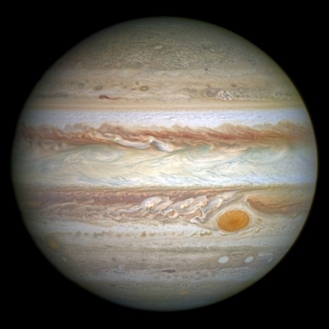
An image of Jupiter as captured by the Hubble Space Telescope.
Years ago, I was editing an elementary-level science text, and I ran across a statement that didn’t make a much sense to me. The author said that Jupiter acted as a “shield,” protecting earth from comets that could hit it. I am not an expert in orbital mechanics, but I couldn’t understand how that would work. It’s true that Jupiter is quite massive; therefore, its gravity would tend to attract comets towards it. However, it seemed to me that its gravity could just as easily attract comets toward the inner solar system (where the earth is) as deflect them away from it. Thus, I didn’t see how Jupiter could do what the author suggested.So I did a little research, and I found a paper from 1995 that seemed to support the author’s contention. The focus of the paper was the hypothetical formation of gas giant planets like Jupiter, but one thing it noted was:1
…terrestrial planet systems physically similar to ours may be abundant but hazardous unless protected by gas giant planets.
This seemed to support the idea that Jupiter “protects” earth from comets, so I didn’t suggest any changes to the author’s statement. However, I still avoided making such a statement in my own textbooks (as least I think I did), because the physics of the claim still did not make any sense to me.
Well, yesterday I attended two lectures by Dr. Kevin R. Grazier at Anderson University, where I am an adjunct member of the faculty. Dr. Grazier is a planetary scientist at NASA’s Jet Propulsion Laboratory, but that’s not why I wanted to listen to his lectures. He is also a science consultant for television shows and movies, and I wanted to learn more about how that works. I have served as an unofficial science consultant for one yet-to-be-produced screenplay, but I was really interested to learn how the process works in productions that are actually being made.
The more he talked about his experiences, the more interested I became, because I learned that he has consulted for some of my favorite television shows. He was the science consultant for Eureka, Defiance, Falling Skies, and the reboot of Battlestar Galatica. Aside from the first series (which I never really got into), those are some of my favorite television shows! In fact, had Battlestar Galatica ended more reasonably, I would probably call it the best science fiction series that has ever been on television. Because of its awful ending, however, I rank it just under Babylon 5, which every science-fiction fan should watch in its entirety. He also was the science consultant for Gravity (one of the more scientifically-accurate space movies) and will soon start working on Pirates of the Caribbean: Dead Men Tell No Tales.
While his experiences with films and television shows were fascinating, and while he did confirm my thoughts regarding “scilebrities” Bill Nye and Dr. Neil deGrasse Tyson, it was something he said about his scientific research that inspired this post.
During the first lecture, in sort of an offhanded way, he said:
Have you heard that Jupiter protects the earth from comets? It’s rubbish.
He then went on to cite a recently-published paper of his2 that supports his claim that the whole idea is wrong. Because I was skeptical of the idea to begin with, I came home and read his paper, and I have to say, I find it very convincing. Even though the paper uses a naturalistic model for the formation of the solar system (which has a wealth of problems), the orbital mechanics used are quite reasonable, and they demonstrate:
Clearly, Jupiter alone is not an efficient defender of the inner Solar System from comets originating in the outer Solar System; as these simulations showed, it likely shunts as many comets toward the terrestrial planets as it deflects away.
Now he does point out that in this naturalistic model, Jupiter may, indeed, play a role in making life possible for earth. One of the many, many problems associated with forming an earth-like planet in a naturalistic way is the presence of so much water. Based on how the earth is thought to have formed, its very early stages would be so hot that a lot of the water on the planet would have vaporized and drifted into space. However, we know that there is a lot of water on earth now, so the question becomes, “How did it get here?” One favored hypothesis is that lots of comets or other water-laden materials from space impacted earth, delivering water to it that way. While I am skeptical of the hypothesis, Grazier’s paper suggests that Jupiter could have actually helped promote that process.
Regardless of whether or not this paper helps to solve the “water problem” associated with a naturalistically-formed earth, it definitely casts strong doubt on the idea that Jupiter plays a role in protecting the earth from comets.
REFERENCES
February 1, 2016
Is There An Undiscovered Planet in Our Solar System?

This is an artist’s depiction of what ‘Planet Nine’ might look like. (click for credit)
On August 24, 2006, the the International Astronomical Union (IAU) passed a resolution declaring that Pluto is not a planet. This caused a lot of consternation, since Pluto had been considered a planet for more than 70 years. What caused this “demotion?” Starting in about 1992, astronomers began discovering other bodies orbiting the sun in a similar fashion. Astronomers began to ask, “If Pluto is a planet, should we consider these other bodies to be planets as well?” The issue really came to a head in 2005, when the body now called Eris was discovered. Its orbit around the sun is similar to that of Pluto, and it was originally thought to be more massive. If Pluto is a planet, then, Eris has to be considered a planet as well.
So, a decision had to be made: Are there 10 planets (or more) in the solar system (including Eris and possibly some of these other Pluto-like bodies), or is Pluto not really a planet? In the end, the IAU decided that Pluto and similar bodies in the solar system aren’t really planets. They are dwarf planets, and that brought the number of true planets in our solar system down to eight. Recently, however, two astronomers have suggested that there are actually nine planets in the solar system, because there is a very large, undiscovered planet lurking quite far from the sun.
For many years there have been suggestions that a ninth planet has been out there, but generally speaking, the evidence for its existence has been rather slim. Recently, however, two well-respected astronomers published a paper in a well-respected journal that laid out some indirect evidence for the existence of Planet Nine. While I don’t consider the evidence to be very strong, it’s certainly worth discussing.
Dr. Konstantin Batygin and Dr. Michael E. Brown have been studying the orbits of several bodies that are far from the sun. In fact, their orbits take them much farther from the sun than Neptune, which is the most distant known planet from the sun. As a result, they are often called trans-Neptunian objects (TNOs). Batygin and Brown decided that the orbits of these TNOs are clustered in an odd way. The closest distance they each get to the sun (called the perihelion) is very similar. This is odd, since they have large, elliptical orbits that are quite different from one another. How is it that these very different orbits have such similar closest approaches to the sun?
According to Batygin and Brown, the most likely answer is that they have been “nudged” into this configuration by the gravity of a large planet. However, none of the currently-known planets has the right kind of orbit to do the required “nudging.” Thus, there must be another planet involved. Based on their calculation, the orbits of these TNOs is best explained by a planet that is roughly 5-15 times as massive as the earth and orbits the sun in a really huge ellipse.
This drawing (here’s the credit) gives you an idea of just what Batygin and Brown envision:
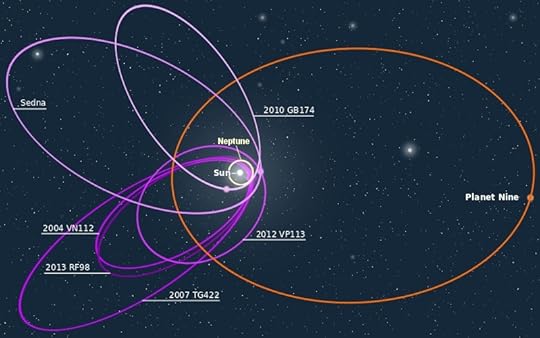
The purple ellipses represent the orbits of the TNOs. Notice how they all reach their closest distance to the sun in a small cluster, despite the fact that their orbits are so different. The orange ellipse represents the orbit of the planet that Batygin and Brown suggest best explains the orbits of the TNOs. To give you an idea of scale, I have drawn in a yellow ellipse that represents a rough estimation of Neptune’s orbit. Thus, if Planet Nine exists, it is far, far, far from the sun. That means it will be very hard to actually find in a telescope.
So…do I think it’s out there? I don’t know. I don’t consider the evidence to be very strong, but that’s because of an assumption Batygin and Brown’s analysis requires. These TNOs take a long time to orbit the sun. One of them (Sedna) is thought to take 11,400 years to make one trip. It would take several orbits of these TNOs for Planet Nine to have “nudged” them into their cluster, and I don’t think the solar system is old enough for that to have happened. Thus, based on the TNO orbits alone, I seriously doubt that Planet Nine exists.
The astronomers estimate that it will take about five years to search the parts of the sky where they expect to find Planet Nine. It will be interesting to see whether or not they find anything.
January 28, 2016
Review of Shadow of Oz
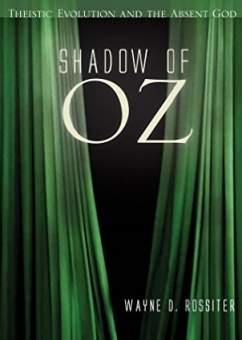 Dr. Wayne D. Rossiter earned his Ph.D. in ecology and evolution from Rutgers University in February of 2012 and is currently an assistant professor of biology at Waynesburg University. His book, Shadow of Oz, has already caused me to write two blog posts (here and here). In one of those posts, a commenter called Rossiter’s book a “must read,” and I have to agree. While I have issues with some of the content, on the whole it is a valuable addition to the wealth of information that has already been written on the subject of origins. As a result, I encourage you to read this book and seriously think about its contents.
Dr. Wayne D. Rossiter earned his Ph.D. in ecology and evolution from Rutgers University in February of 2012 and is currently an assistant professor of biology at Waynesburg University. His book, Shadow of Oz, has already caused me to write two blog posts (here and here). In one of those posts, a commenter called Rossiter’s book a “must read,” and I have to agree. While I have issues with some of the content, on the whole it is a valuable addition to the wealth of information that has already been written on the subject of origins. As a result, I encourage you to read this book and seriously think about its contents.
In some ways, the main thrust of his book is obvious: the standard view of Neo-Darwinism (random mutations filtered by natural selection) is incompatible with the Christian faith. I don’t know many people who would disagree with that statement. Nevertheless, the way Rossiter makes that point is rather profound. Early on in the book, for example, he gives five extended quotations from different authors regarding the history of the universe. The first and fourth are from Dr. Carl Sagan (atheist), the second is from Dr. Richard Feynman (atheist), the third is from Dr. Richard Dawkins (atheist). The fifth is from Dr. Karl Giberson (Christian who is a staunch evolutionist). The passages are indistinguishable, and that’s the point. As Rossiter says:
I could have chosen any number of brief atheistic accounts of the history of the universe, and not one of them would differ in any functional way from the one offered by Giberson. (p. 25)
Rossiter’s discussion of Dr. Kenneth Miller’s views on origins is equally insightful and perhaps even more damning. He shows that, like Giberson, the “creation” account that Miller believes is indistinguishable from that of an atheist. Further, he shows in rather stark terms just how confused Miller is when it comes to what he believes. For example, Rossiter quotes Miller as saying that he tells his students that he believes in Darwin’s God. However, as Rossiter makes clear, that statement is pure nonsense:
…as Miller admits earlier in his book, Darwin was not a believer in God. He became a staunch agnostic, who demanded strict naturalistic answers for life’s workings. As so, it’s quite appropriate that Miller should claim to share Darwin’s view. (p. 163)
In fact, this is where Rossiter gets the title of his book. He says that for theistic evolutionists like Miller and Giberson, there is no way to detect God in His creation. As a result, God ends up looking a lot like the Great Oz in The Wizard of Oz.
Doorman: Ooooh! The Wizard? But nobody can see the Great Oz! Nobody’s ever seen the Great Oz! Even I’ve never seen him!
Dorothy: Well, then – how do you know there is one? (p. 27)
This, of course, is an excellent point. If you can’t see God in his creation (as Romans 1:20 clearly says you can), then there is really no reason to believe in Him.
But wait a minute. Science can’t explain the miraculous, so how can you see God when you are using science to study His creation? Rossiter’s answer is simple, and it is something I have to tell my atheist scientific colleagues all the time:
…while a miracle cannot be explained, it can be observed, and that’s a significant difference. It leaves a tangible fingerprint of the divine. (p. 79)
Indeed, science cannot explain miracles, but it cannot exclude their existence, because they leave tangible evidence behind. In addition, allowing for the existence of miracles doesn’t go against science. As a scientist who has done a lot of original research, I can tell you that I see unexplainable data all the time. That doesn’t mean my experiment is invalid. It just means that those data are outliers, and I cannot use them to make general conclusions. Miracles are outliers in science, and when you exclude them simply because they cannot be explained, you are actually working against science.
Now I must point out (as Rossiter does) that not all theistic evolutionists are as slavishly committed to the standard view of Neo-Darwinism as Giberson and Miller. This leads to one of the weaknesses I see in the book. Rossiter mentions a few theistic evolutionists who think God has “guided” the process along. He doesn’t quote them extensively, which is probably why I think he ends up mischaracterizing their views a bit. While there are a few examples of this, I will concentrate on Dr. Alvin Plantinga, as I am very familiar with what he has written.
Plantinga is a theistic evolutionist, and he thinks God guided the process of evolution. Rossiter says that, like Miller and Giberson, Plantinga ends up with a God who cannot be observed in His creation. However, that’s quite incorrect. In fact, Plantinga’s “Evolutionary Argument Against Naturalism” specifically says we know that God must have guided the process along, because naturalistic evolution would not produce creatures that believe in true statements. Since humans can believe in true statements, evolution cannot be naturalistic. I don’t find that argument convincing, but Plantinga does, and as a result, he clearly believes in a God that can be seen in His creation.
How does Plantinga believe God guided evolution? He says one possibility is that God works on the quantum level. In the weird world of quantum mechanics, nothing is deterministic. In the end, there are simply a range of probable outcomes for every situation. It’s possible that God controls some of those probabilities, forcing events that would guide the process of evolution instead of allowing them to be completely random. Rossiter addresses this idea and doesn’t like it. In the end, he says that if God “rigged” the possible outcomes, then you don’t really believe in the standard Neo-Darwinian view, because it requires completely random mutations.
However, I don’t really agree with Rossiter on that point. It’s all a matter of how many times God had to “rig” the probabilities, compared to how many times mutations could happen randomly. If the process of evolution required a ridiculous number of mutations, but only a few key ones had to be nonrandom, it would be very hard to detect them. As a result, you could generally treat mutations as random, with only a few outliers that would be very hard to detect. Theoretically, if we had full knowledge of the process of evolution, we could then see those outliers, but given our limited understanding of the process, it is quite possible that the nonrandom aspects of evolution simply escape us at this point in our understanding.
Now, of course, I don’t think the process of evolution could ever completely explain the natural world that we see, so I don’t agree with Plantinga or any other theistic evolutionist. However, I am just saying that theistic evolution as outlined by Plantiga and many others is not inconsistent with Christianity. It is inconsistent with many Christian theologies, but there are some Christian theologies that are wholly consistent with this kind of evolution. However, while it is not inconsistent with Christianity, I do think that theistic evolution is inconsistent with science.
This leads me to what I think is the real strength of Rossiter’s book. Mostly in Chapter 6, he lays out in no uncertain terms how the “flagellate-to-philosopher” view of evolution is wildly inconsistent with the data. As I discussed previously, he lays waste to the claim of a universal genetic code as evidence for common descent. He points out how the fossil record is incredibly discontinuous. He discusses how our ability to compare DNA has destroyed Darwin’s hope of a “tree of life.” He discusses the absurdity of adaptionist explanations for things like the speed of a cheetah. He also argues that evolution has no predictive power, which is something that atheists Fodor and Piattelli-Palmarini make in their book, What Darwin Got Wrong.
Since this review is getting long, I will close with just one more excellent point that Rossiter makes. Since the origin of life is such an incredible enigma for naturalists, some would like to separate it from the process of evolution. Thus, it is common for evolutionary evangelists to say things like, “The origin of life is not a part of the theory of evolution.” However, as Rossiter so aptly puts it:
While it is often argued that Darwinian evolution does not care how life began, but only describes what happened thereafter, this is untrue. If we begin the project with an intelligently designed system, then everything that follows suffers from the problem of having been the result (directly or indirectly) of intentionality. (p. 111)
In other words, the theory of evolution does, indeed, depend on the origin of life, because life’s origin clearly affects how evolution can work.
As you can see, Dr. Rossister has done a masterful job of tackling this important subject, and I think that anyone who is interested in the origins debate should read his book.
January 25, 2016
Another Bad Sermon Illustration

A shepherd in Wales (click for credit)
My first post on a bad sermon illustration led a person on Facebook to ask me about a different sermon illustration. That also turned out to be a bad one. Well, that post led another person on Facebook to ask about another sermon illustration:
If a shepherd has a sheep that is always straying and getting into trouble, sometimes what the shepherd will do is break two of the sheep’s legs. Then the shepherd would set the bones and carry the lamb on his shoulders. It would take about five to eight weeks for the sheep’s bones to heal, and in that time, the lamb would grow closer to the shepherd. Once the sheep was well, he wouldn’t want to stray anymore because of the bond that developed between him and his master.
Maybe something traumatic has happened in your life because this is God’s way of breaking your legs.
Like the other two sermon illustrations I wrote about, this one is false. Breaking an animal’s bone is a risky business, and it causes an enormous amount of trauma. In addition, there are chances for complications, poor recovery, etc. In his classic book The Sheep, William Arthur Rushworth discusses what you should do with a sheep that has a broken leg.1
A sheep will, as a rule, nurse a broken leg and make a good recovery if the parts have been properly dressed, but unless the animal be a valuable ram or ewe, especially desired for breeding purposes, it is best not to try treatment, but to turn the animal at once over to the butcher.
I could not find any work from any reputable source that indicates a shepherd would ever intentionally break a sheep’s leg.
I did manage to track down what might be the original reference for the sermon illustration, however.2 It is in a collection of sermons given by Robert Boyd Munger, who wrote the well-known book My Heart — Christ’s Home. In the relevant sermon, Munger says that a shepherd in Syria told an American tourist that he had intentionally broken a sheep’s leg because it would not stay with the flock. The shepherd supposedly went on to say that when the sheep finally healed, it would trust the shepherd and never run away again.
Even though I couldn’t find any reputable source that talked about intentionally breaking a sheep’s leg, I did find a reputable source that talked about intentionally braking a sheep’s leg. In the January/February 2013 issue of Sheep! magazine, someone wrote in asking about this sermon illustration. The editor replied that there is something known as a leg clog that is temporarily tied to the leg of a sheep or goat that is hard to control. Some call the clog a “brake,” and tying it to the leg of the animal is sometimes called “braking the leg.” The editor writes:3
I have personally seen the use of clogs on goats, but not with sheep, here in southern Appalachia decades ago. I didn’t like what I saw, but I must confess the man who used them was almost wizard-like in his success and ease of handling all classes of livestock except maybe swine.
So while responsible shepherds don’t break the leg of a wayward sheep, they might brake the sheep’s leg. Perhaps this bad sermon illustration comes from someone hearing a phrase like “brake the sheep’s leg” and misinterpreting it to mean “break the sheep’s leg.”
REFERENCES
Jay L. Wile's Blog
- Jay L. Wile's profile
- 31 followers


